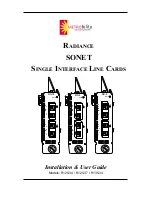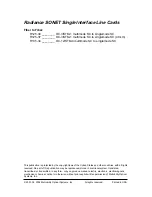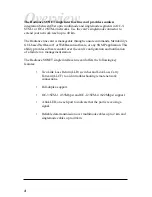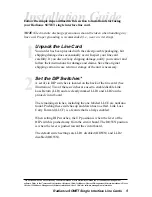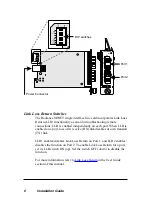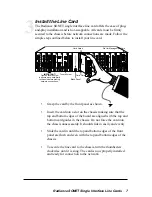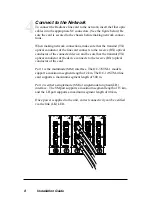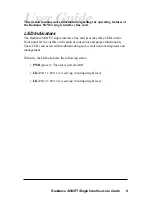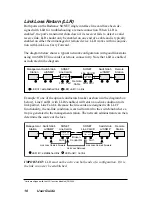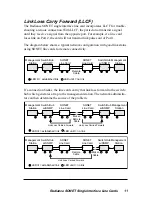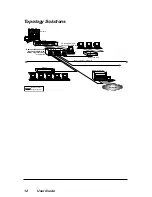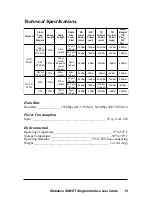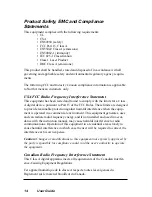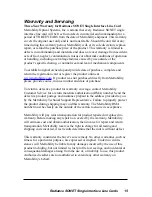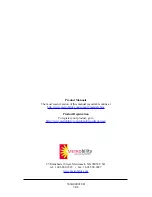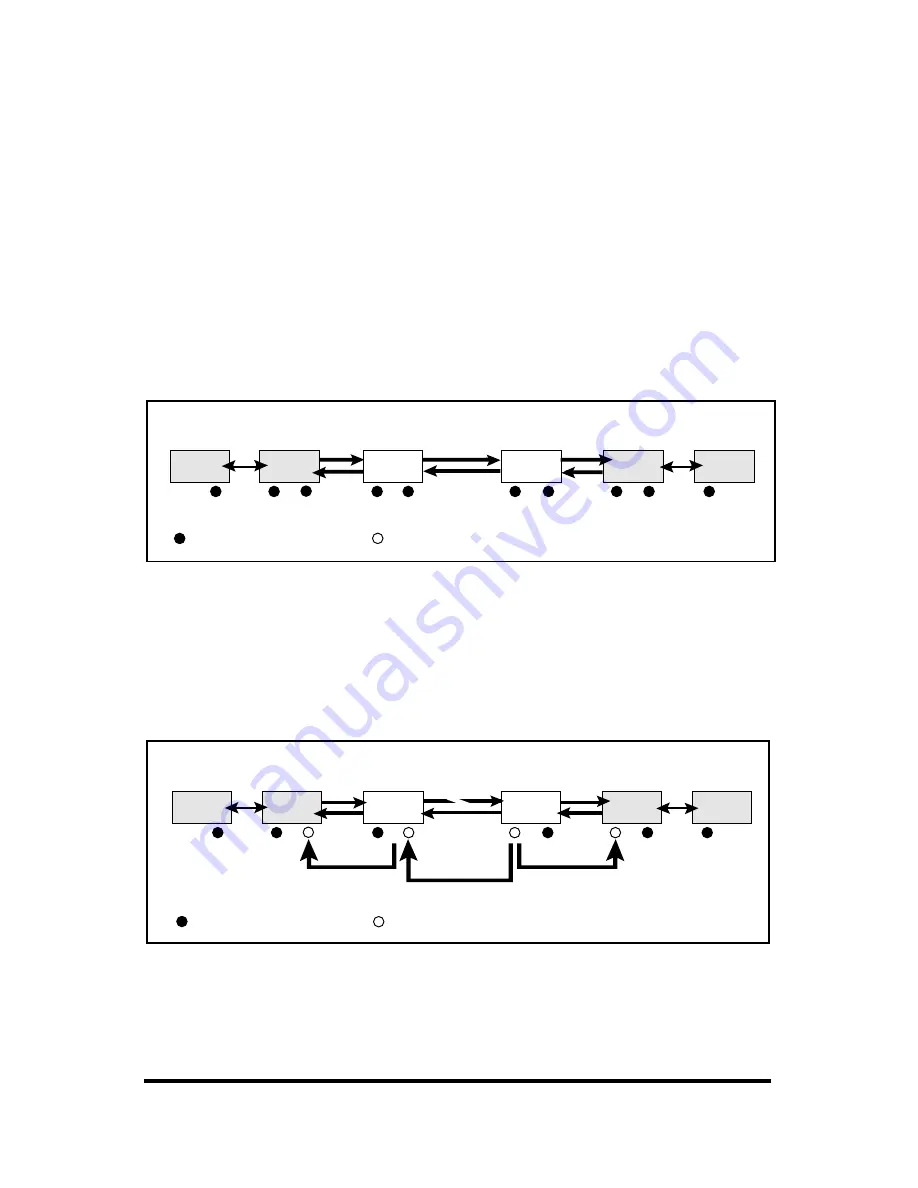
10
User Guide
Link Loss Return (LLR)
Both ports on the Radiance SONET single interface line card have been de-
signed with LLR for troubleshooting a remote connection. When LLR is
enabled
*
, the port’s transmitter shuts down if its receiver fails to detect a valid
receive link. LLR should only be enabled on one end of a cable and is typically
enabled on either the unmanaged or remote device. LLR works with in conjunc-
tion with Link Loss Carry Forward.
The diagram below shows a typical network configuration with good link status
using two SONET line cards for remote connectivity. Note that LLR is enabled
as indicated in the diagram.
*Units are shipped with the LLR function disabled (DOWN).
Example: If one of the optical conductors breaks (as shown in the diagram box
below), Line Card B, with LLR2 enabled, will return a no-link condition to its
link partner, Line Card A. Because the line cards are designed with LLCF
functionality, the no-link condition is carried forward to the switch/hub where a
trap is generated to the management station. The network administrator can then
determine the source of the loss.
Management
Station
Remote
Station
Switch/Hub
w/SNMP
Switch/Hub
w/SNMP
SONET
Line Card A
Remote
Cable
LED lit = established link
LED unlit = no link
LLR2 is ON
LLR1 is OFF
LLR2 is ON
LLR1 is OFF
Port 2 Port 1
Port 2 Port 1
SONET
Line Card B
Management
Station
Remote
Station
Switch/Hub
w/SNMP
Switch/Hub
w/SNMP
Link Loss Returned
Link Loss Carried Forward
Link Loss Carried Forward
LED lit = established link
LED unlit = no link
Broken
Conductor
LLR2 is ON
LLR1 is OFF
LLR2 is ON
LLR1 is OFF
Port 2
Port 1
SONET
Line Card A
SONET
Line Card B
IMPORTANT: LLR must not be active on both ends of a configuration. If it is,
the link can never be established.

